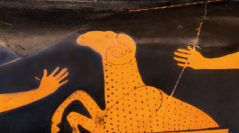

 Anthropozoologica
58 (11) - Pages 107-114
Anthropozoologica
58 (11) - Pages 107-114My aim here is to explore the critical and methodological issues involved in a potential reconstruction of the Anatomai, based on the underlying assumption that such a reconstruction should be based on an examination of the texts and contexts in which Aristotle refers to the Anatomai and the role he ascribes to them in the enquiry into differences and causes in biology. I critically discuss Aristotle’s references to dissection experiments by comparing them with references to anatomical representations in an attempt to show that in Aristotle’s eyes the scientific value of pictorial evidence is not inferior to the direct experience of dissection but may indeed have epistemological priority. Aristotle’s reference to actual dissection experiments often refers to extremely simple procedures. This simplicity seems incompatible with the complexity of the anatomical techniques required to obtain the amount and accuracy of detail that Aristotle seems to gather from the anatomical drawings of the Anatomai. On the other hand, Aristotle tends to focus in his anatomical experiments on a few distinctive parts of animals. It thus seems unlikely that the Anatomai could have presented an encyclopaedic account of comparative anatomy. To account for this cleavage between anatomical experimentation and morphological representation, I attempt to describe Aristotle’s approach by distinguishing between an anatomy of the “what” and an anatomy of the “why”.
Aristotle’s zoology, history of comparative anatomy, body plan, dissection, vivisection.